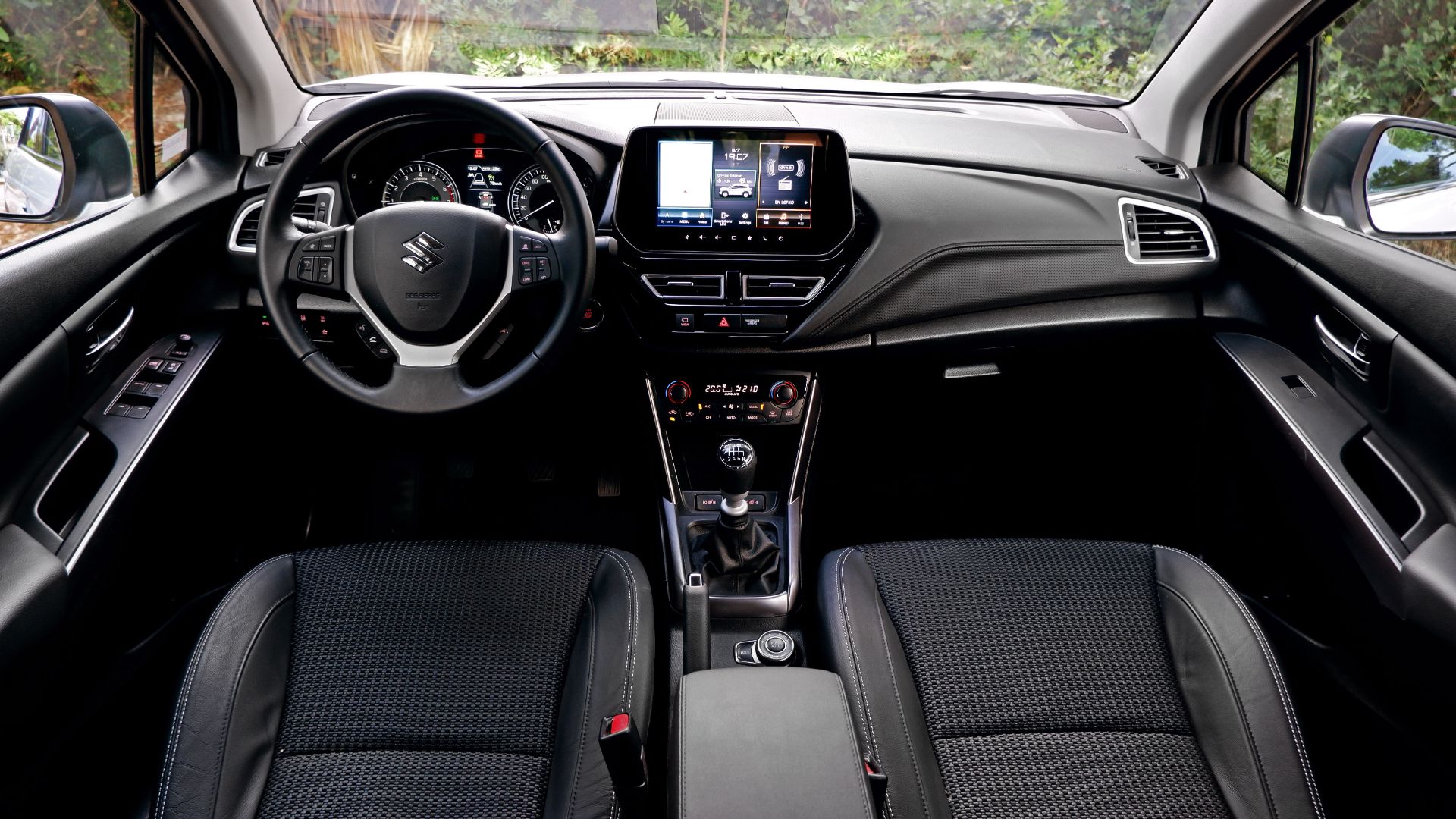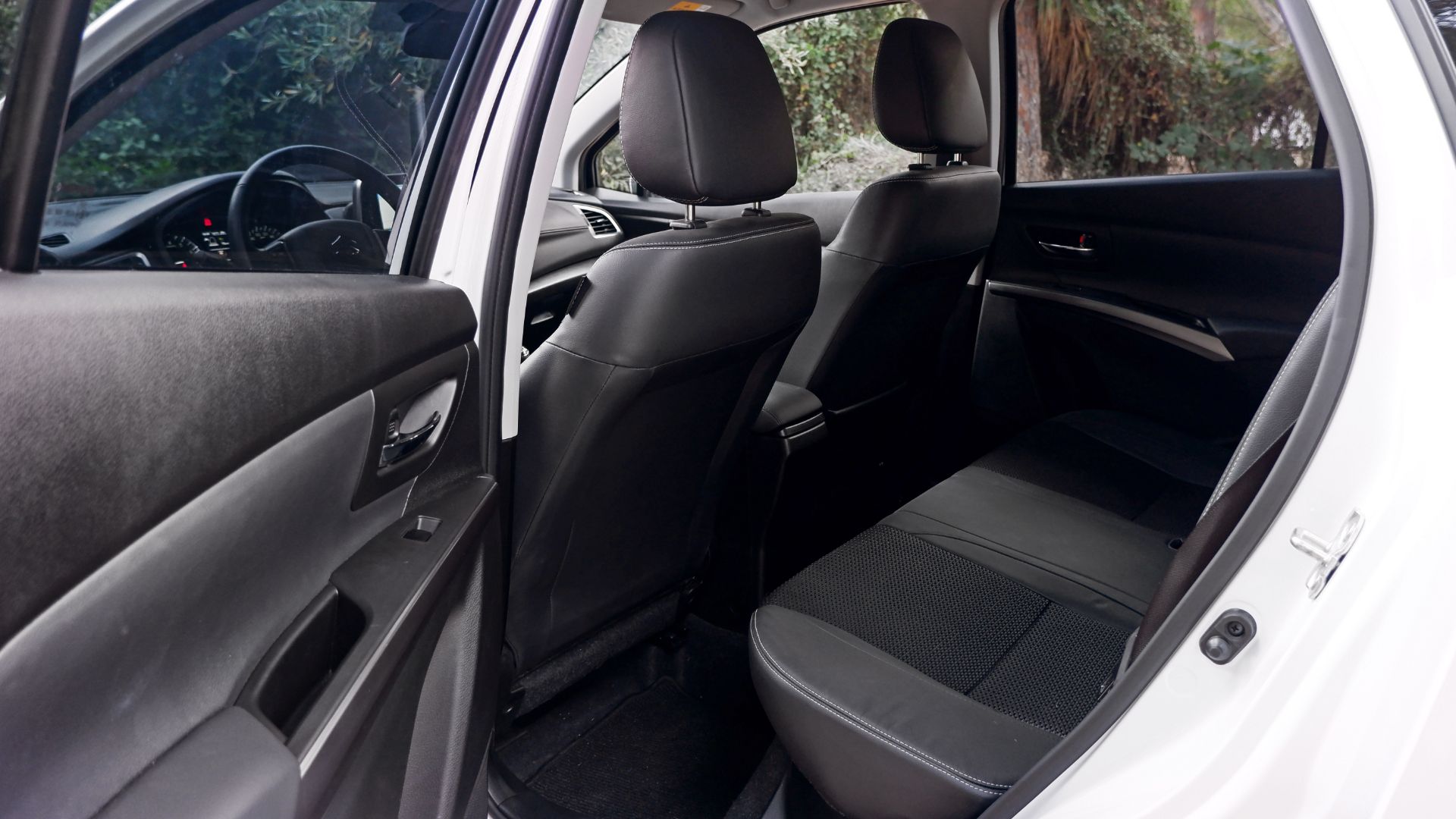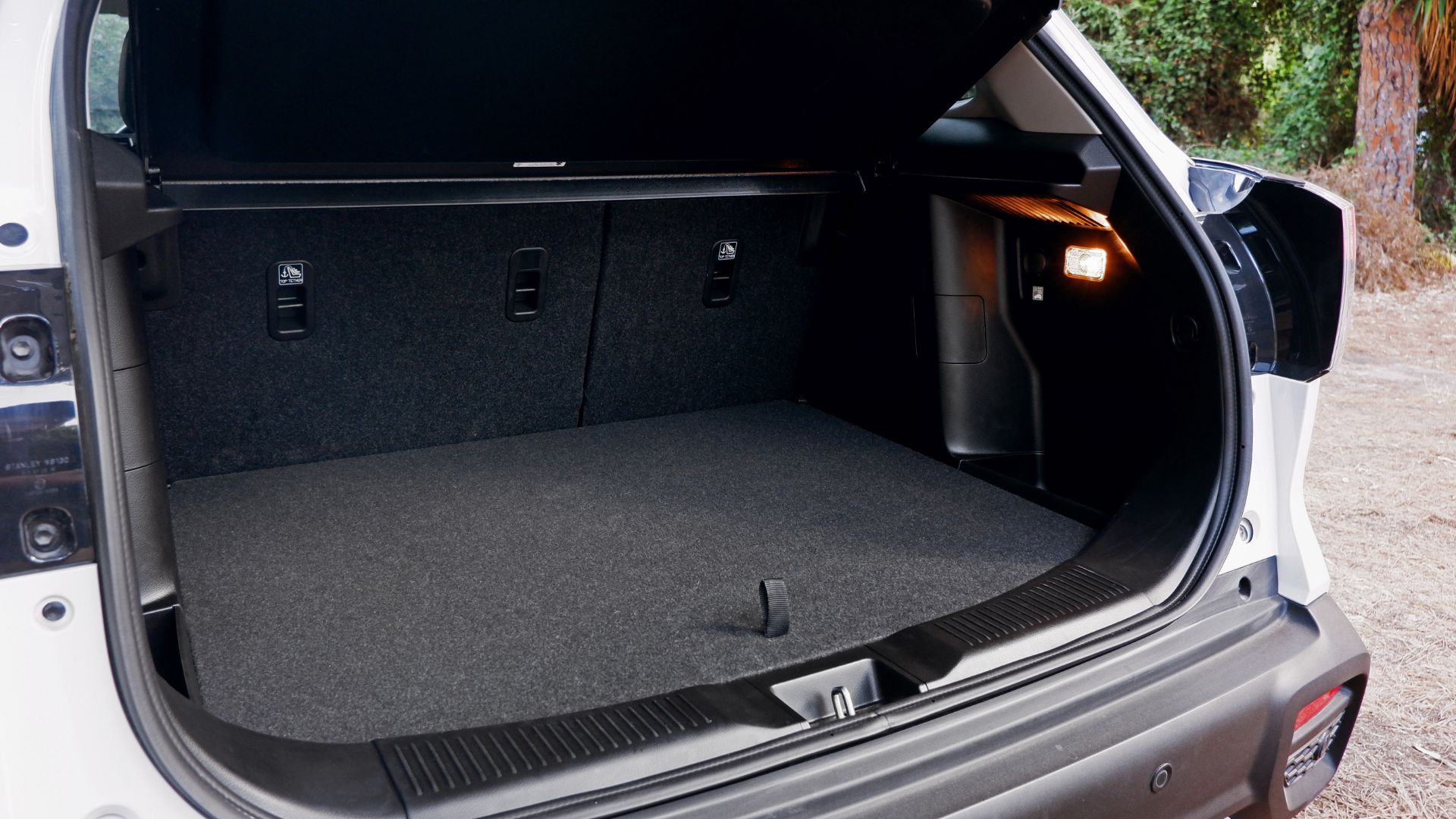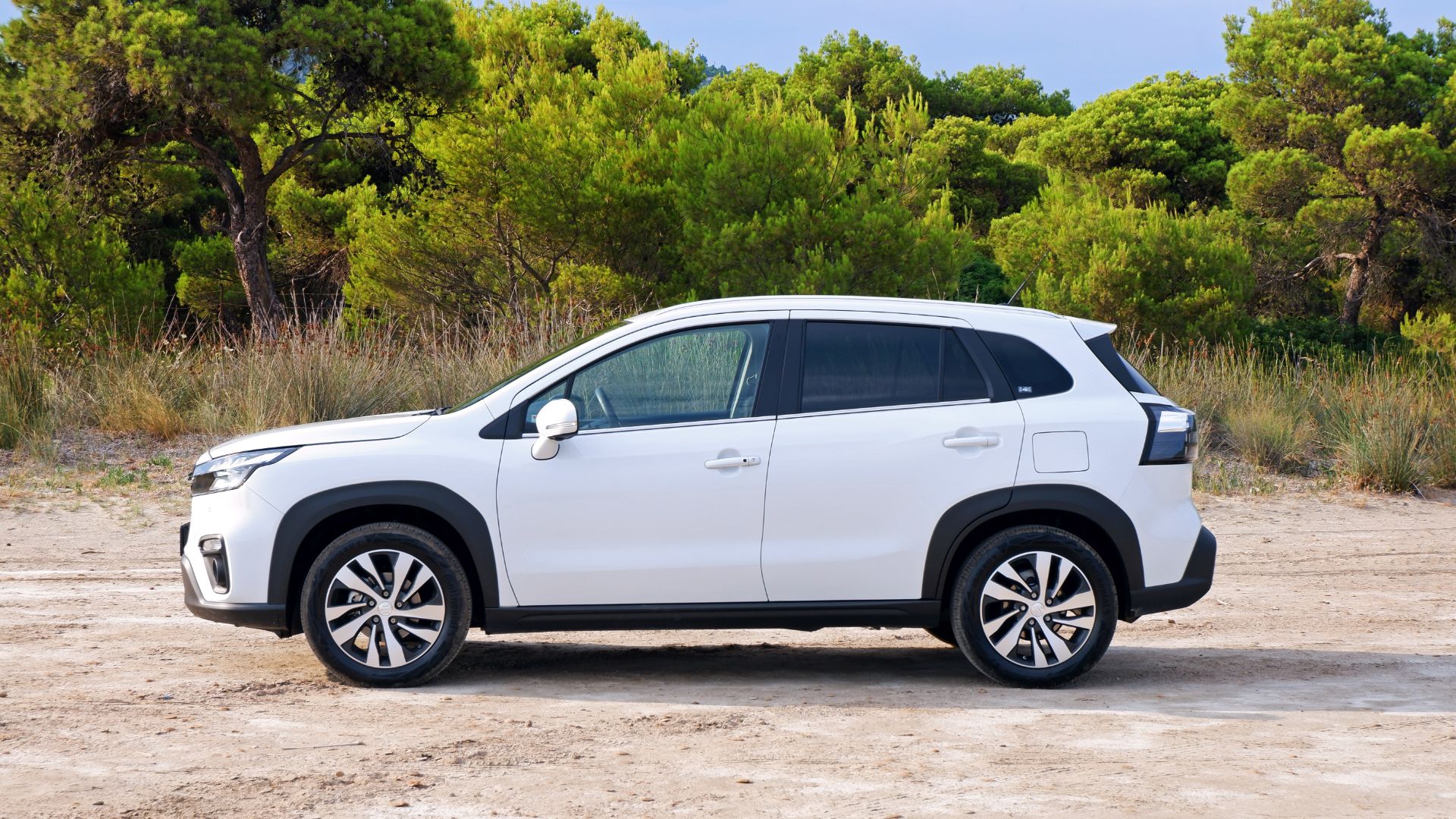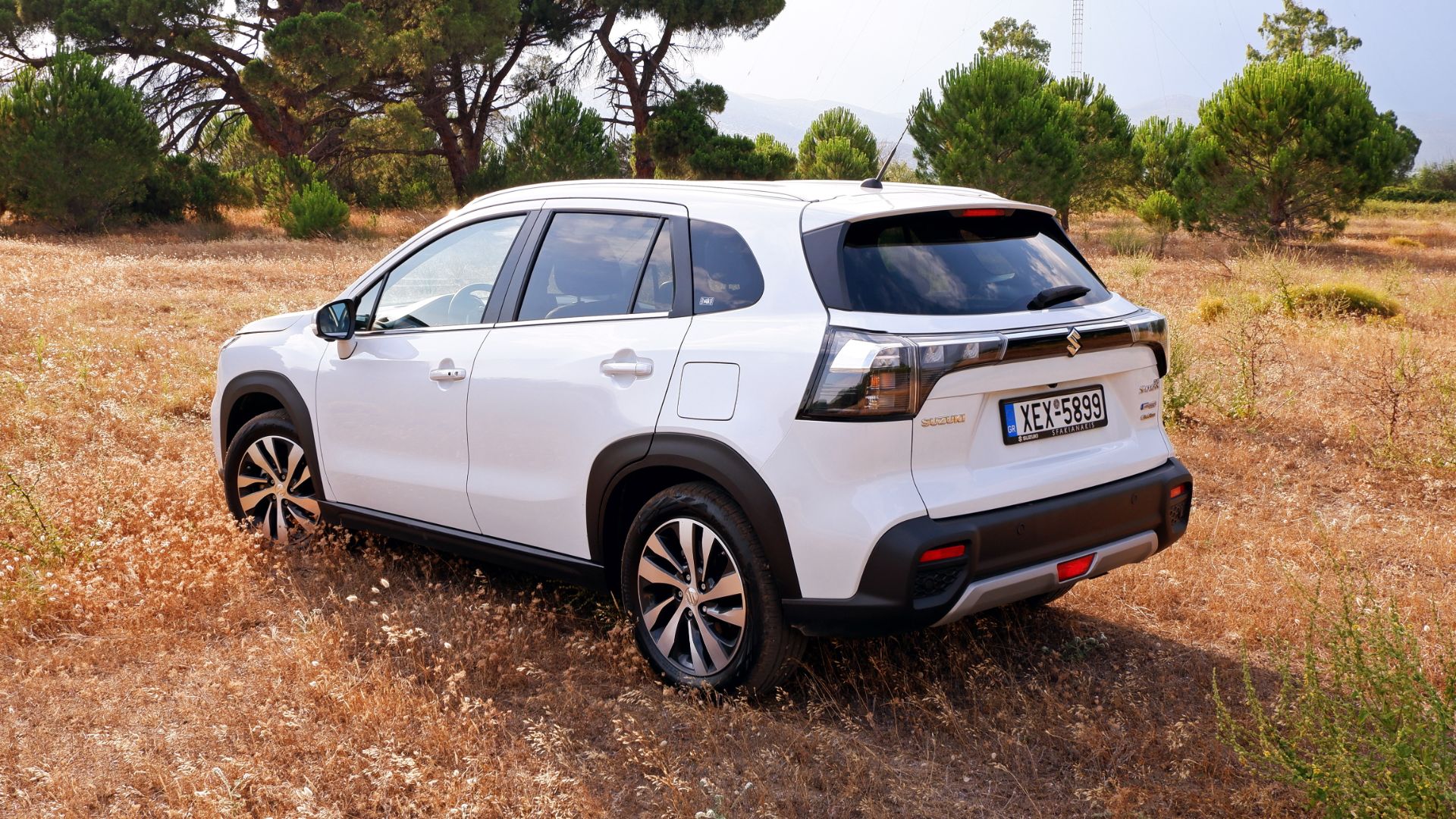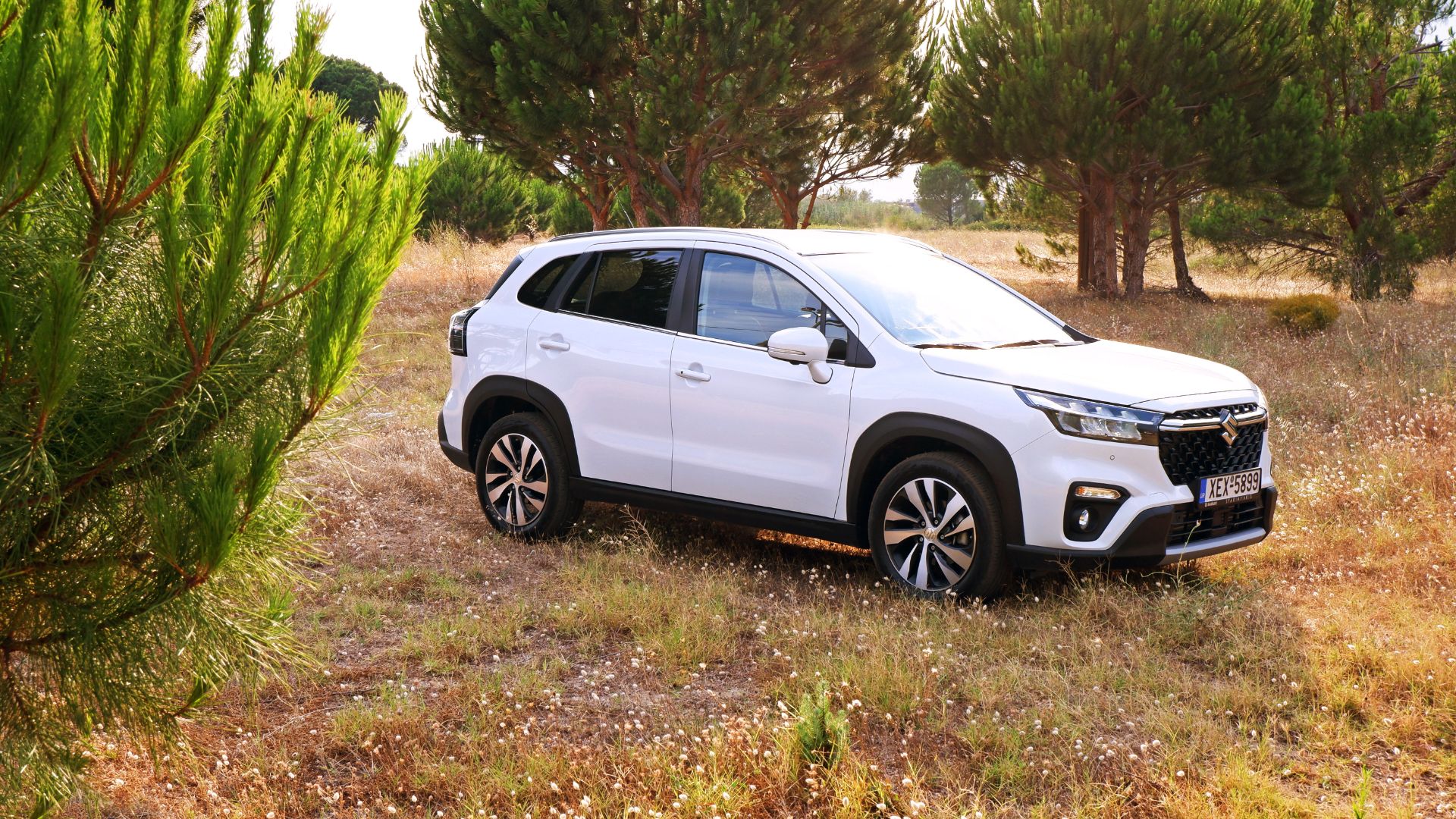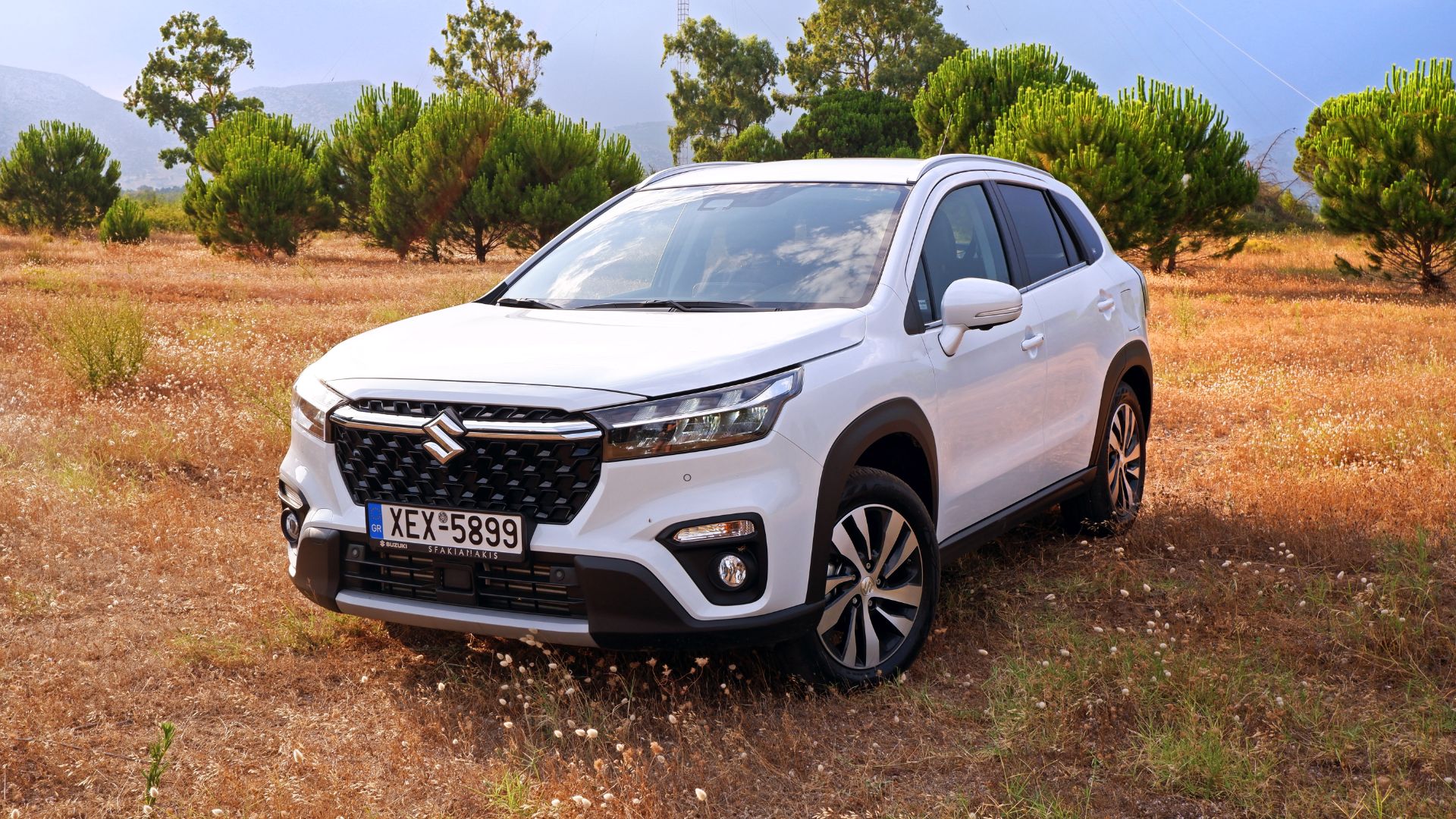Suzuki might not be present in the US, but in Europe and Asia it maintains a wide range of products focused on city cars and SUVs. The SX4 S-Cross is an important part of the SUV lineup, so we wanted to test the recently revealed third-generation model to see how much it has improved over its predecessor, and how well it stacks up against the fierce competition.
Improved But Sedate Styling
Starting with the exterior, it is clear that the SX4 S-Cross is completely redesigned over the previous generation despite using the same underpinnings and retaining an identical footprint. Measuring 4,300 mm (169.3 inches) long, it is well into the B-SUV segment, since it is smaller than all C-SUVs. Overall, the S-Cross resembles an old-school family-friendly SUV, not interested in the sportier and sexier approach of rivals like the Peugeot 2008, the Renault Captur, and the Ford Puma.
Also Read: Renault Captur R.S. Line Is One Of The Best In Class
At the front, Suzuki designers gave it a more aggressive look, shedding the weirdness of the old model and making it look more like a proper SUV. The grille has grown and the headlights are positioned higher. The front bumper has less unpainted plastic, a smaller-than-usual aluminum-style skidplate, and Jeep Renegade-style faux intakes integrating the turn signals and the foglights.
Similarly, the profile has less cladding on the doors, boxier wheelarches above the 17-inch wheels, and a familiar windowline. The rear end is where opinions are divided, with the connected taillights poking out of the bodywork and looking quite large for the size of the vehicle. The narrower rear windscreen, the larger tailgate, and the rugged-looking rear bumper are welcome improvements over its predecessor. Still, in our eyes, the new S-Cross is not as pleasing to look at as the aging Vitara.
Roomy And Practical But Not Fancy And Premium
Stepping inside the cabin, the first thing you notice is the new free-standing 9-inch infotainment touchscreen that has been repositioned above the climate vents, flanked by a more stylish insert on the dashboard featuring a soft-touch material. This looks and feels much nicer than the old S-Cross, showing that a small change can make a big difference. Suzuki’s new infotainment has modern graphics and fonts, plus a revised menu structure that is easy to get used to, not losing the simplicity of the proven old system. The always-on touch-sensitive shortcuts on the bottom would be better off as actual buttons, but at least the screen is responsive. Interestingly, the S-Cross is the only Suzuki product in Europe that benefits from the new infotainment, unlike other Asian markets where it is already widely used by the majority of the Suzuki range.
Setting aside the infotainment and main dashboard area, the rest of the interior is largely carried over from the previous generation, including the plasticky door cards, the climate controls on the lower part of the center console, the AllGrip selector, the three-spoke steering wheel, and the analog instrument cluster. The latter looks quite dated by today’s standards, with the LCD screen from the previous decade not being able to match the configurable digital instrument clusters of rival models. Maybe Suzuki should add the new cluster that was recently introduced as an option on the closely-related Suzuki Grand Vitara in India.
Our S-Cross was the flagship GLX trim which means it gets the 9-inch infotainment (instead of the 7-inch of lesser trims), leather and heated seats, dual-zone climate control, a 360-degree camera, full-LED headlights, and the entire Suzuki ADAS suite which can be found in most Suzuki models in Europe, no matter how small. In fact, the mid-spec GL+ trim is already well-equipped if you don’t mind the smaller screen, the fabric upholstery, and the inability to add an optional panoramic sunroof.
In terms of space, both the front and the rear passengers sit high, with plenty of available legroom and headroom. The S-Cross feels like one of the roomiest models in the segment, staying true to its family-friendly character, although the lack of climate vents and USB ports for the rear passengers is not ideal. The boot has a very practical shape with a double floor and a capacity of 430 lt (15.2 cubic feet) in the mild hybrid version, with the full hybrid being significantly smaller at 293 lt / 10.3 cubic feet boot due to the batteries. In any case, the boot of the S-Cross is a full 75 lt (2.6 cubic feet) larger than the Vitara / Escudo sibling, placing it on the top end of the B-SUV segment.
An Old Recipe Still Works
As we mentioned earlier, the new SX4 S-Cross is based on the tried-and-tested Global C architecture underpinning all of Suzuki’s SUVs from the smaller Brezza up to the similarly-sized Grand Vitara and Toyota Urban Cruiser Hyryder twin. The same platform was also used by the old S-Cross so we were eager to see if Suzuki engineers managed to improve it in the new generation.
The carry-over turbocharged mild-hybrid 1.4-liter K14D BoosterJet engine initially feels less powerful than the numbers suggest. However, after spending a little more time with it, you realize it can offer more than enough grunt for the size of the vehicle, allowing the S-Cross to gather up miles quickly on the highway. There is also a noticeable change in performance when you select the Sport mode, with the gas pedal becoming more sensitive.
Suzuki announces 127 hp (95 kW / 129 PS) and 235 Nm (173.3 lb-ft) for the combustion engine, but there is an additional 14 hp (10 kW / 14 PS) and 53 Nm (39 lb-ft) coming from the 48V electric motor. As a mild hybrid, electrification can be felt as a prolonged stop-start system, but it is said to help in reducing emissions and fuel consumption – at least on paper. During the time we spent with the S-Cross we saw an average between 6.5 lt/100km (36 mpg) and 7.0 lt/100km (33.6 mpg) in mixed driving conditions. This is more than the official 5.9 lt/100km (39.9 mpg) WLTP figure, but we were not trying to be economical at any point of our driving.
Generally speaking, the platform doesn’t hide the fact it was developed for smaller segments and budget proposals, but you can feel a slight improvement in terms of ride quality and refinement. The suspension is definitely on the soft side, offering a more comfortable ride than most rivals. Predictably, body roll is noticeable in the corners, but the S-Cross never feels floaty, retaining the signature Suzuki driving dynamics which can be quite fun when the driver is in the mood for it. The steering wheel is light and not as communicative as in a Ford Puma, but the lightweight nature of the S-Cross which weighs 1,305 kg (2,877 lbs) in its heaviest AWD form means you can easily place it wherever you want in the corner.
We did take the S-Cross for some light offroading, benefiting from the generous 175 mm (6.9 inches) ground clearance and the AllGrip system. Note that this is the only SUV in this price range that is offered with AWD and a six-speed manual, alongside the Dacia Duster. The driver can choose between Snow, Auto, and Sport modes, with a useful lock function available at lower speeds. Just like its Vitara sibling, the S-Cross proved to be quite capable and comfortable off the beaten track, confirming Suzuki’s reputation. It won’t go as far as the ladder-frame Suzuki Jimny, but it certainly excels in this regard when you compare it to other B-SUVs and crossovers, without sacrificing its civilized road manners.
Pricing And Competition
In Greece, the Suzuki SX4 S-Cross starts from €21,730 ($22,108) in the entry-level GL trim with a mild-hybrid FWD setup. This is actually cheaper than many B-SUV offerings which have seen significant price markups during the past year. However, our example which was the highest GLX trim with the AllGrip AWD system costs €29,980 ($30,494), bringing it closer to base-spec C-SUV territory against models like the Nissan Qashqai or the Kia Sportage. The sweet spot of the S-Cross range is probably the mid-spec GL+ with AWD, which comes with plenty of standard kit and is priced at a more reasonable €26,730 ($27,185), almost identical to the rival mid-spec Dacia Duster 1.5 dCi 115 4×4.
In the UK market, Suzuki opted for a simpler two-member lineup – effectively eliminating an entry-level option – with the 2WD Motion selling for £24,999 ($30,144) and the AWD Ultra hitting pricey tones at £29,799 ($35,933). With this kind of money, you can get the entry-level Hyundai Tucson, although the S-Cross is still a lot cheaper than all AWD offerings with the exception of the Dacia Duster.
Verdict
Despite being more of a comprehensive update than a brand new model, the Suzuki SX4 S-Cross remains a well-positioned proposal in a crowded segment. While lacking behind more modern rivals in terms of futuristic design, perceived interior quality, and fancy tech, it is offering a compelling package of practicality and versatility on and off the beaten track while being pretty well-equipped for the price. We should praise the fact it is one of the last remaining AWD SUVs with a manual gearbox, retaining a mild approach in terms of electrification as well as proper driving dynamics.


